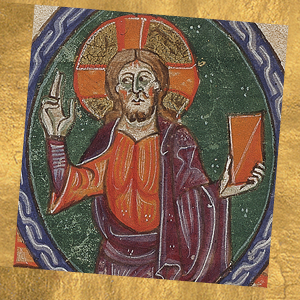St. Theresa of Jesus, Virgin, Doctor of the Church, discalced Carmelite

From novels to hard reality
The daughter of a Jewish convert and his second wife, Saint Teresa of Avila, was born on March 28, 1515. She had a happy childhood with her brothers and cousins, and was fascinated by novels that told tales of chivalry. After the death of her elder brother, John, in 1524 and the loss of her mother, Beatrice, the young woman was sent to study at the Augustinian Monastery of Our Lady of Grace, where she was struck by a first existential crisis. After serious illness, she returned to her father’s home, and witnessed the departure of her beloved brother Rodrigo for the Spanish colonies overseas. In 1536, she was hit by the so-called “great crisis” and came to the firm decision to enter the Carmelite monastery of the Incarnation at Avila. Her father, however, was opposed, and Teresa fled home. Accepted by the nuns, she made her profession on 3 November, 1537.
“I felt shaken to the core”
Teresa’s health once again failed her. Despite the consequent return to the family, her case is deemed hopeless, and Teresa is returned to the convent, where the nuns begin to prepare her funeral. Inexplicably, however, the gravely ill Teresa returns to life and health. Partially released from the commitments of cloistered life owing to her convalescence, cheerful of character, a lover of music, poetry, reading and writing, Teresa would weave a dense fabric of friendships, drawing to her person various people eager to meet her. She would quickly come to feel these encounters a distraction from the principal task of prayer, and experience her “second conversion”: “My eyes fell on a picture ... It was our Lord covered with sorrows. As soon as I looked at Him I felt completely shaken ... I threw myself before His feet and shed tears, and I begged Him to give me strength not to offend Him anymore.”
Portrayed by Bernini
The most mysterious and interesting parts of Saint Teresa of Avila’s life, are her visions and ecstasies. In her Autobiography (written on the order of the bishop), and in other texts and letters, Teresa describes the various stages of divine, visual and auditory manifestations. She is seen to levitating, falling into disarray, and laying still as death (as Bernini depicts her around 1650, in the statue in the church of Our Lady of Victory in Rome). These events corresponded to a great spiritual growth, which Teresa, who had a natural gift for the literary, would pour into her mystical texts, which are among the clearest, most powerful poetics ever written.
Her intense spirituality did not always meet with understanding. Some of her confessors would even consider her a victim of demonic illusions. She was supported by the Jesuit, St. Francis Borgia, and the Franciscan friar, St. Pietro d'Alcántara, who dissipated the doubts of her accusers.
The inner castle
Teresa felt she had to rebuild Carmel to remedy a certain internal disorganization. In 1566 the Superior General of the Order authorized her to found various monasteries in Castile, including two convents of Discalced Carmelites. So were convents born in Medina, Malagon and Valladolid (1568); Toledo and Pastrana (1569); Salamanca (1570); Alba de Tormes (1571); Segovia, Beas and Seville (1574); Soria (1581); Burgos (1582), inter alia.
Decisivewas the 1567 meeting between Teresa and a young student of Salamanca, just ordained a priest: under the name of John of the Cross, the young man would take the habit of the Discalced Carmelites, and accompany the foundress on her travels. They would overcome various painful events, including divisions within the order and even charges of heresy.
In the end, Teresa would have the best of it: with the birth of the reformed Order of Carmelites and the Discalced Carmelites.
Teresa’s most famous work is certainly the Interior Castle, the soul's journey in search of God through seven particular steps of elevation, alongside her Way of Perfection, and the Book of Her Foundations, as well as numerous maxims, poems and prayers.
Tireless despite her constant health struggles, Saint Teresa of Avila died in Alba de Tormes in 1582, during one of her journeys.
Links:
Angelus address of Pope Benedict XVI
http://w2.vatican.va/content/benedict-xvi/en/angelus/2006/documents/hf_ben-xvi_ang_20060716.html
Angelus address of Pope Benedict XVI
http://w2.vatican.va/content/benedict-xvi/en/angelus/2006/documents/hf_ben-xvi_ang_20061119.html
General Audience of Pope Benedict XVI dedicated to St. Teresa of Avila
https://w2.vatican.va/content/benedict-xvi/en/audiences/2011/documents/hf_ben-xvi_aud_20110202.html
Regina Coeli address of Pope Benedict XVI
http://w2.vatican.va/content/benedict-xvi/en/angelus/2011/documents/hf_ben-xvi_reg_20110522.html
Message of Pope Francis to mark the Teresian Year, 2014
Letter to the Superior General of the Discalced Carmelites on occasion of the 500th anniversary of the birth of St. Teresa of Avila (St. Teresa of Jesus)







